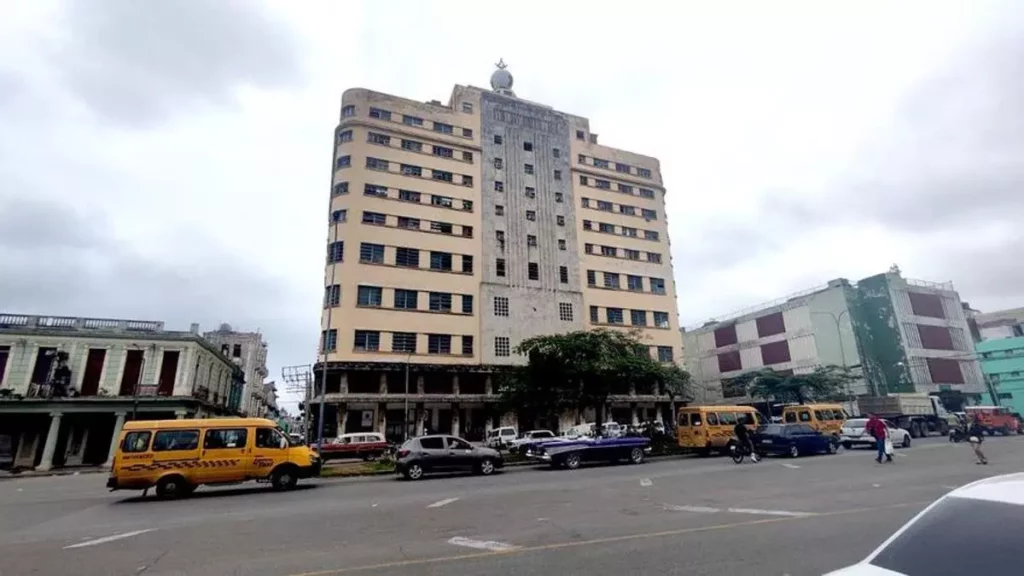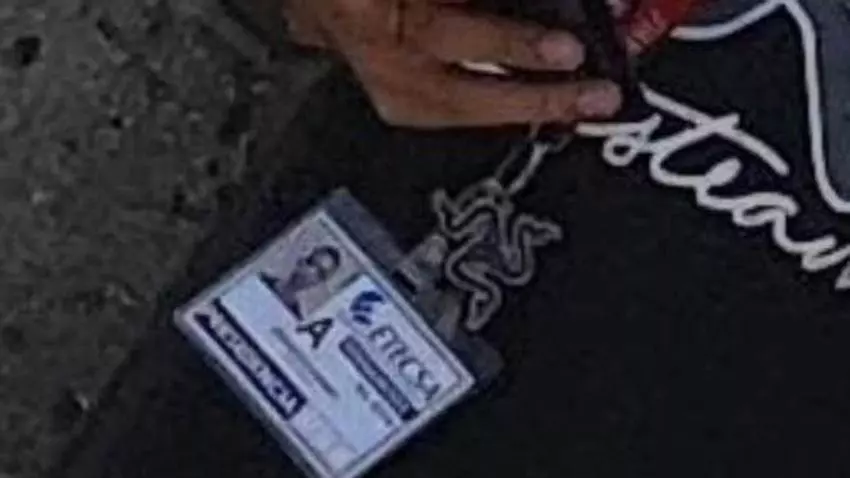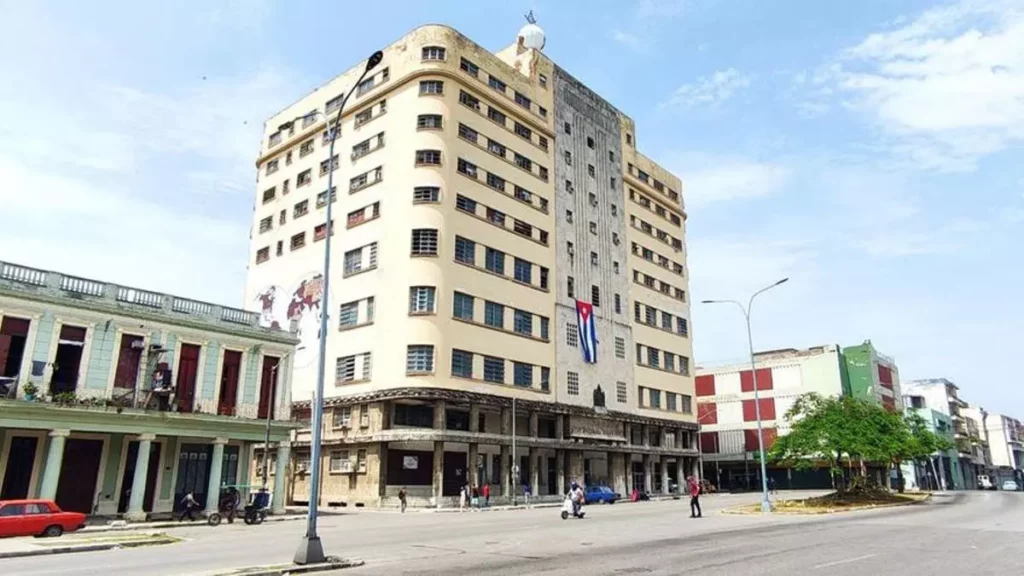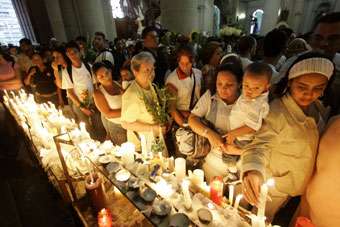
LA MASONERIA CUBANA SE DEBATE EN MOMENTOS CRITICOS DE SU EXISTENCIA. PHOTOS.
El Gran Maestro de los masones cubanos se atrinchera bajo la protección de la Seguridad del Estado. Unos 200 miembros de la Gran Logia de Cuba exigen el cese de Urquía Carreño por su vínculo con el régimen.
LA HABANA, CUBA- La tensión institucional en la masonería cubana llegó a uno de sus puntos más críticos este martes. Unos 200 masones de varias provincias se reunieron durante la mañana en el edificio de la Gran Logia de Cuba, en La Habana, para exigir el cese de Mario Urquía Carreño como Gran Maestro, por considerar que la Seguridad del Estado lo “impuso” a la fraternidad. Encerrado en su despacho –el mismo lugar donde, en enero, fueron robados 19.000 dólares bajo su responsabilidad–, Urquía Carreño se negó a salir.
Los alrededores del imponente edificio, ubicado en la esquina de la avenida Carlos III y la calle Belascoaín, en Centro Habana, se mantenían al mediodía de este martes bajo un operativo de agentes de la Seguridad del Estado vestidos de civil, según pudo comprobar 14ymedio, algunos de ellos con credencial de empleado de la estatal de comunicaciones, Etecsa.
“Este señor no va a salir, ya demostró que no le interesa la masonería”, declaró Iriel Hernández Cobreiro, uno de los masones que pidieron al Gran Maestro un diálogo con los allí reunidos, según una transmisión en vivo de Cubanet. “Si él fuera el Gran Maestro, hubiera salido a darle el frente a los masones”. Aun así, dieron por cumplido el objetivo de la protesta: el “no reconocimiento” de Urquía Carreño y la demostración de que los masones cubanos “están de pie para lo que haga falta”.
Los masones reivindicaron su derecho a llevar a cabo la “justa acción”, como llaman al acto de “hacerle entender” a Urquía Carreño que “mancilla una oficina que no debe ser habitada por la deshonra. Los hermanos masones cubanos no le reconocen una investidura que no le corresponde”, por estar orientada por las autoridades del régimen.
Había inquietud en las afueras de la Gran Logia tras el intento de los masones de dialogar con Urquía Carreño
Uno de los masones del grupo criticó que Juan Alberto Kessel Linares, que había sido elegido como sustituto de Urquía Carreño el pasado abril, hubiera abandonado la oficina y cedido a las presiones del Gobierno. “Es una pena que Kessel no esté aquí. Jamás debió haber cedido su asiento”, espetó. En las imágenes tampoco se veía la presencia del Soberano Gran Comendador Ramón Viñas Alonso, la mayor autoridad masónica –junto al Gran Maestro– y acusador de Urquía Carreño
Otro video compartido por Cubanet muestra a los masones debatiendo la mejor manera de obtener una respuesta positiva de parte del actual Gran Maestro. “Estamos en un estado lamentable de descomposición”, explicó uno de los reunidos. “Se nos ha impuesto una figura que ha perdido la capacidad moral”.
“La violencia no es el camino ni lo que venimos a buscar”, aclararon, sino “el respeto a la ley”. Recordaron que los allí presentes habían recurrido a los caminos que establece la institución para resolver este tipo de crisis. Se aprobó la expulsión de Urquía Carreño de acuerdo con el artículo 50 de la Constitución Masónica, una medida cuyo cumplimiento el Ministerio de Justicia bloqueó.

El operativo de la Seguridad del Estado alrededor de la Gran Logia de Cuba incluía agentes de civil, algunos de ellos con credencial de empleado de Etecsa / 14ymedio
Consideran que, dado que el ministerio elaboró un “dictamen” y no una resolución, no están obligados a su estricto cumplimiento. “La legislación masónica cubana es clara”, y Urquía Carreño no está exento de ser juzgado por el hecho de ser Gran Maestro. Tampoco tiene ningún derecho a crear discordia entre la Gran Logia, que preside, y el otro alto cuerpo masónico de la Isla, el Supremo Consejo para el Grado 33.
Según se informó a los reunidos, Urquía Carreño emitió un “alto decreto” calificando al Supremo Consejo del Grado 33 de “irregular”. El documento tiene como único objetivo “la división y destrucción de la masonería en Cuba”, denunciaron. “Tenemos la suficiente entereza de carácter para hacer cumplir nuestras leyes. Sin violencia, sin amenaza y sin imposiciones de fuerza, pero con firmeza”, recalcaron.
“Paradójicamente, somos nosotros los que estamos reclamando que se cumplan las leyes del Estado”, aseguraron. Explicaron que la masonería no discrimina a sus miembros, y que hay muchos de estos provenientes de las Fuerzas Armadas y del Partido Comunista, además de opositores al régimen.
Siete meses de crispación y varios intentos de cisma entre altos funcionarios han llevado a la masonería cubana a la peor crisis interna de su historia.
En un momento de la reunión, uno de los masones alegó que la prensa independiente podría “tergiversar” el contenido de la reunión. “Cuando se escriba un artículo ya se nos fue de las manos”, dijo. Los presentes –entre los que se encontraban los periodistas independientes Camila Acosta y Ángel Santiesteban– dieron su consentimiento de que la prensa estuviera en el encuentro y lo transmitiera en vivo y exigieron respetar el trabajo de los periodistas.
Siete meses de crispación y varios intentos de cisma entre altos funcionarios han llevado a la masonería cubana a la peor crisis interna de su historia. El pasado 3 de junio, el Ministerio de Justicia intervino por segunda vez en la discusión con una medida drástica: invalidar la decisión de la Gran Logia de Cuba y el Supremo Consejo para el Grado 33, que habían expulsado el pasado marzo a Urquía Carreño.
En lugar de mediar, el Ministerio de Justicia –a través del Registro de Asociaciones– imponía a Urquía Carreño en el cargo, un gesto que los masones consideraron inaceptable. Hoy, ante la puerta cerrada del Gran Maestro, subrayaron que ya no hay vuelta atrás: “El futuro de la masonería está ya en nuestras manos”, dijeron. “Hasta hoy por la mañana estaba en manos del Registro”.

Agencies/ 14yMedio/ MasoneriaCubana/ Extractos/ Internet Photos/ Arnoldo Varona/ www.TheCubanHistory.com
LA HISTORIA DE CUBA/ THE CUBAN HISTORY, HOLLYWOOD.











